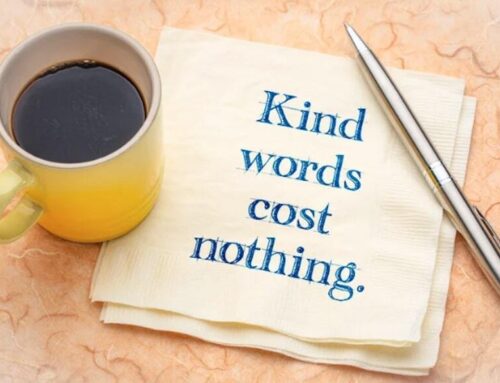
The world of work isn’t all harmony and high fives. While collaboration is key to success, disagreements are inevitable. Organizational behavior experts categorize these clashes into various types of conflict, as task conflict arises from differing opinions on projects or processes. In contrast, process conflict focuses on disagreements about procedures or workflows.
Unlike task conflict or role conflict, relationship conflict in the workplace is the most emotionally charged and potentially damaging. When personalities clash, or communication breaks down, it can poison the well of cooperation, significantly impacting productivity, morale, and employee well-being.
This guide dives deep into the importance of addressing relationship conflict in the workplace, explores its damaging effects if left unresolved, and equips you with the tools to navigate these situations effectively.
Understanding and Differentiating Relationship and Task Conflicts
Task conflict, which centers around disagreements on work-related issues, differs fundamentally from relationship conflict. While relationship conflicts arise from personal disagreements, which may include clashes over political views, task conflict focuses on concrete issues related to job tasks.
Task conflict can be constructive if managed correctly, as it often stems from diverse perspectives in approaches to task-related problems. Identifying whether a conflict is a task conflict or a relationship conflict requires careful observation and understanding of the underlying causes.
For instance, if the disagreement revolves around methods for completing a project or procedural choices, it’s likely a task conflict. Conversely, relationship conflicts arise when personal values or personalities clash.
One of the most effective strategies for distinguishing task conflict from relationship issues is to listen to the content of the discussion. If the discourse is about ideas, plans, or logistics, it typically signals task conflict.
Recognizing task conflict early is not just beneficial—it’s crucial. It allows for timely intervention before it escalates or intertwines with relationship issues, giving you the power to maintain control over the situation.
The Importance of Addressing Relationship Conflict
Ignoring relationship conflict in the workplace is a recipe for disaster. These simmering personal disagreements between colleagues can have a ripple effect, poisoning the well of professional cooperation and impacting the entire organization.
Here’s why prioritizing the resolution of relationship conflict is crucial:
Maintaining a Positive Work Environment
Unresolved relationship conflict can severely degrade the quality of the workplace environment. When co-worker conflicts are left unaddressed, they create a ripple effect of negativity that permeates throughout the team. This often results in disengaged employees who are less likely to invest their full potential in their roles.
Communication suffers as individuals may avoid speaking openly or mistrust colleagues’ intentions, which significantly hampers collaborative efforts. Conversely, a harmonious workplace, where relationship conflict is addressed constructively and all parties agree to communicate openly and respectfully, fosters a more positive and productive environment.
This proactive approach encourages a culture of transparency and continuous improvement, which are fundamental to an organization’s health.
Improved Productivity
Workplace conflict is a major distraction that can derail the most focused teams. When employees are embroiled in relationship conflict, they are more likely to spend their time strategizing their next argument rather than concentrating on their tasks. This shift of focus not only hampers their own productivity but can also affect the morale of the entire team.
Resolving these conflicts frees up mental and emotional energy, allowing employees to refocus on what truly matters: their work. As relationship conflict diminishes, the cognitive and emotional resources previously expended on navigating interpersonal disagreements can be redirected toward more productive activities, boosting both individual and team performance.
Reduced Employee Turnover
The presence of chronic workplace conflict can make a workplace feel hostile and unwelcoming, especially to new employees who are still acclimating to the organizational culture. This environment can drive employees to seek employment elsewhere, where they feel more valued and supported. The costs associated with high turnover rates are not just financial. They also include lost productivity and the intangible loss of institutional knowledge.
Addressing relationship conflicts proactively helps build a supportive atmosphere that nurtures employee retention. This stability is beneficial for the organization as it reduces the frequency and associated costs of hiring and training new employees and helps preserve the intellectual capital within the company.
Enhanced Employee Well-being
The negative effects of unresolved conflicts in the workplace extend beyond just professional outcomes—they significantly impact employees’ mental and emotional health. Prolonged exposure to a conflict-laden environment can lead to stress, burnout, anxiety, and depression.
These conditions not only affect the well-being of employees but can also lead to higher healthcare costs and increased absenteeism. By addressing relationship conflicts promptly and effectively, organizations create a healthier environment where employees feel safe, respected, and valued. This support fosters a more resilient workforce that is better equipped to handle challenges both within and outside the workplace.

The Impact of Unresolved Conflict on Workplace Relationships
Having established the importance of addressing relationship problems in the workplace, it is crucial to understand the far-reaching consequences of ignoring such issues. Unresolved workplace conflict has a significant impact on various facets of organizational life, deteriorating the quality of professional relationships and the overall work environment.
Communication Breakdown
One of the most immediate effects of unresolved workplace conflict is a breakdown in communication. Conflict breeds tension and distrust among team members. For instance, the marketing team might experience internal strife, where personality clashes or disagreements over work assignments lead to a reluctance to share information freely.
This hesitation can cause misunderstandings, missed opportunities, and hampered progress on projects. Such breakdowns are not limited to specific groups; they ripple across the organization, affecting how other employees engage with the company at large.
Erosion of Morale
Continued disputes have a profound impact on employee morale. Constant exposure to a contentious environment where issues remain unaddressed makes employees feel undervalued and disrespected. This feeling can lead to decreased motivation and a pervasive sense of powerlessness among the workforce.
When team members do not see a path to resolution for their common conflicts, their commitment to the organization and its goals wanes, which can have detrimental effects on their performance and overall job satisfaction.
A Breeding Ground for Resentment
Unresolved workplace conflict often fosters an undercurrent of resentment among team members. As issues fester and negativity builds, the work environment can become toxic. This toxicity is particularly damaging to team dynamics and collaboration, as it transforms minor disagreements into persistent sources of strife.
For example, a team working on a collaborative project may find that unresolved resentment over work-related issues leads to passive-aggressive behavior or outright refusal to cooperate, undermining the collective effort.
Escalation to Bullying or Harassment
In extreme cases, if workplace conflict is not addressed, it can escalate into more severe forms of discord, such as bullying or harassment. This progression is especially likely when initial relationship problems are neglected, allowing aggressive behaviors to become normalized within the team.
Such environments are not only harmful to the individuals directly involved but also create a hostile atmosphere that affects all other employees. Moreover, these severe issues carry potential legal repercussions for the organization, highlighting the critical need for proactive conflict management strategies.

How to Deal With Relationship Conflict in the Workplace
Transitioning from understanding the impact of unresolved conflict, it’s crucial to explore practical strategies to manage conflict effectively. Various key strategies for effective conflict management can transform workplace conflict into opportunities for growth and enhanced cooperation.
Early Intervention
Don’t let simmering resentments boil over. The longer you wait to address a relationship conflict, the more entrenched it becomes. Stepping in promptly allows you to address conflict before emotions escalate and communication breaks down completely.
Imagine a situation where a colleague keeps taking credit for your work. Addressing this early, while the situation is fresh, allows for a calmer conversation and a faster resolution. By taking a proactive approach, you minimize disruption, emotional toll, and the potential for the conflict to spread to other colleagues.
Direct Communication
Open and honest communication is the cornerstone of resolving relationship conflict. Instead of stewing in silence or gossiping to others, have a direct conversation with the other party. Express your concerns calmly and respectfully, focusing on the specific behavior causing the issue rather than personal attacks.
For example, instead of saying, “You’re always taking credit for my work,” try, “I noticed you presented my ideas as your own at the meeting. Can we discuss how to ensure proper credit is given in the future?”
This direct approach helps clear misunderstandings, avoids unnecessary defensiveness, and opens the door to a collaborative problem-solving process where both parties can work toward a solution that fosters a more positive working relationship.
Active Listening
Emotions can run high during a relationship conflict at work, and accusations can fly. This is where active listening becomes your most valuable tool. It can help you navigate relationship conflict in various ways.
- Understanding Their Perspective: By actively listening without interrupting, you can build a bridge of understanding. You gain insight into their concerns, frustrations, and motivations behind their behavior. This allows you to see the situation from their point of view, fostering empathy and creating a space for productive dialogue.
- Promoting Empathy: When you actively listen, you validate the other person’s feelings. You acknowledge their experience, even if you don’t necessarily agree with it. This builds trust and fosters a sense of respect, which are essential ingredients for resolving conflict.
- Finding Common Ground: Active listening helps you identify areas of agreement, even if they seem buried beneath the surface of the conflict. By focusing on shared interests and goals, you can begin to build a path toward a mutually agreeable solution.
Focus on the Issue
Effective employee conflict resolution demands that discussions remain focused on the specific issue at hand. Avoid veering into personal attacks or blame-shifting, which can derail the decision process and exacerbate the conflict.
By concentrating on the problem, not the person, you can work together to brainstorm solutions that address the root cause of the conflict. This focus helps ensure that the conflict resolution process is constructive and oriented toward a positive outcome.
Compromise and Collaboration
Compromise is fundamental to successfully resolving conflict. Be open to modifying your position and encourage the other party to do the same. This willingness to adjust and adapt is crucial for developing a solution that meets the needs of both parties.
The aim is to engage in a collaborative problem-solving process where both parties work together to develop a mutually agreeable solution. Such collaboration not only resolves the current issue but also lays the groundwork for stronger relationships and smoother interactions in the future.
Tips for Handling Relationship Conflicts Effectively
After exploring strategies for direct conflict management, it’s essential to consider additional tips that can aid in navigating these situations more effectively. These guidelines emphasize maintaining a constructive and professional approach during workplace conflict, ensuring that resolutions are beneficial and conducive to a positive organizational culture.
Maintain Professionalism
During workplace conflict, every team member must maintain composure and professionalism, even in heated moments. This includes avoiding inflammatory language or resorting to personal attacks.
Keeping interactions professional helps prevent tensions from escalating and preserves the dignity of all involved. This approach not only supports immediate dispute resolution but also upholds the team’s overall integrity.
Choose the Right Time and Place
The setting and timing of a workplace conflict discussion can significantly influence the outcome. It’s important not to attempt dispute resolution when emotions are high.
Instead, choose a neutral location and a time when both parties involved are calm and collected. This ensures that both individuals can focus on the issue at hand with clear minds, facilitating a more effective dialogue.
Seek Support if Needed
Sometimes, resolving a conflict between team member roles may require more than just the parties involved. Don’t hesitate to seek help from a supervisor, HR representative, or a neutral third party.
An objective perspective can be invaluable in mediating the discussions and can help ensure that the resolution process is fair and balanced. This external input can be crucial in cases where the parties are too close to the situation to see it objectively.
Learn From the Experience
Every instance of workplace conflict provides a learning opportunity. Reflecting on the conflict after it has been resolved can reveal valuable insights into the dynamics within the team.
Consider what led to the conflict—was there a communication breakdown or a misalignment in expectations? Understanding these triggers can help in making necessary adjustments to improve team effectiveness and prevent similar conflicts in the future.
Learning from these experiences strengthens the team’s resilience and adaptability.
Encourage Constructive Resolution
In dealing with workplace conflict, it is beneficial for solutions to be reached collaboratively rather than having an outcome imposed. This empowers each team member to contribute to the resolution, enhancing their commitment to the agreed solution and fostering a sense of ownership and responsibility.
Such a collaborative approach not only resolves the immediate issue but also reinforces the organizational culture of teamwork and mutual respect.

How Resolve’s Training Options Can Help
Resolve Conflict Resolution Training offers a comprehensive suite of conflict resolution training solutions that are designed to empower both individuals and organizations to manage workplace disputes effectively.
Our conflict resolution workshops are specifically crafted to provide practical skills and strategies for addressing the complexities of relationship and task conflict in a work environment.
Here’s how our training can make a significant difference:
- Identifying Types of Conflict and Their Triggers: Understanding the root causes of conflicts is the first step in effective conflict management. Our workshops equip team members with the tools to recognize different types of conflicts—whether they are interpersonal, task-related, or process-oriented. By identifying these triggers early, team members can address issues before they escalate, maintaining harmony and productivity.
- Communication Techniques for Conflict Resolution: Communication is the cornerstone of resolving disputes. Our programs focus on teaching participants how to articulate their thoughts clearly and listen to others without bias. These skills are essential for HR department professionals and managers who often mediate disputes, ensuring that all voices are heard and respected.
- Active Listening and Empathy: Active listening and empathy are critical in achieving a deeper understanding of the concerns and emotions involved in a conflict. Our training encourages team members to hone these skills, which can transform potential confrontations into opportunities for mutual understanding and cooperation.
- Negotiation and Mediation Skills: Negotiation and mediation are vital in finding solutions that all parties can agree on, fostering a cooperative work environment. Our workshops provide hands-on experience in these areas, allowing participants to practice and develop confidence in their abilities to mediate and negotiate effectively.
- De-escalating Heated Situations: Finally, the ability to de-escalate conflicts is a valuable skill that protects the well-being of all involved and upholds the integrity of the workplace. Resolve’s training emphasizes techniques for calming tense situations and promoting a culture where respect and understanding prevail.
If you are ready to transform how your team handles relationship or task conflict, join Resolve’s conflict resolution for employees today. Empower your workforce with the skills to manage relationship and task conflict effectively, enhance communication, foster respect, and promote a healthier work environment. Sign up now and start building a more cohesive team.

About the Author: Jeremy Pollack
Jeremy Pollack, Ph.D. is the founder of Defuse De-Escalation Training, a sister company of Pollack Peacebuilding Systems, the largest workplace conflict resolution training and consulting firm in North America. He actively participates in de-escalation training and consulting initiatives for a variety of industries, from Fortune 500 companies to well-known non-profits. Besides his Ph.D. in Psychology from Grand Canyon University, Jeremy holds a Master’s Degree in Negotiation, Conflict Resolution, and Peacebuilding (NCRP) from California State University, Dominguez Hills. He is also a member of several organizations focused on conflict resolution and peacebuilding, such as the Peaceful Leadership Institute, the Association for Conflict Resolution, and the Division 48 (Division of Peace Psychology) of the American Psychological Association. Jeremy also holds several certifications in the field of training and coaching: he is a Certified Organizational Development Coach (CODC™), a Certified Clinical Trauma Specialist-Individual (CCTS-I™), and an Associate Certified Coach (ACC) under the International Coaching Federation.









